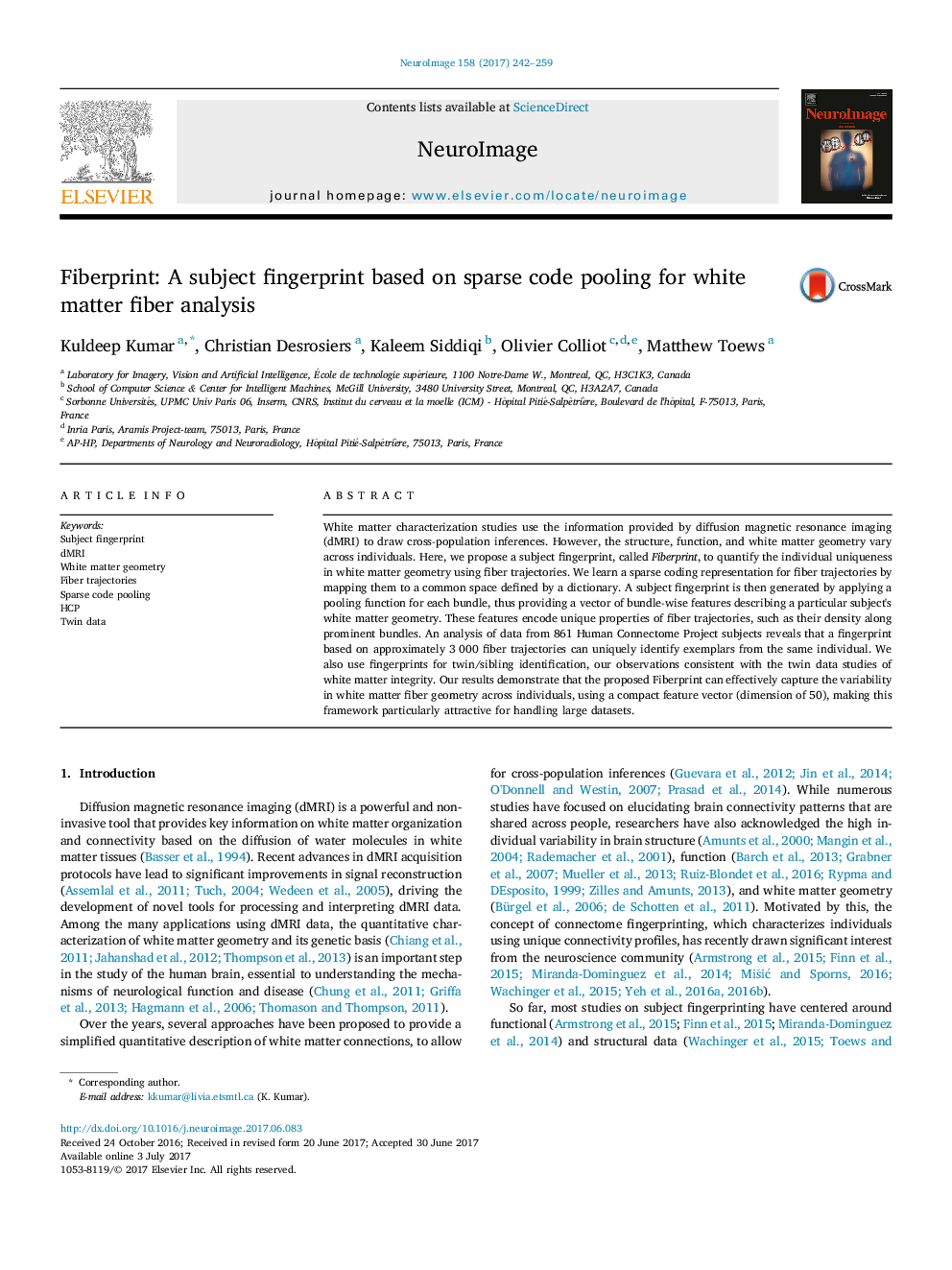| کد مقاله | کد نشریه | سال انتشار | مقاله انگلیسی | نسخه تمام متن |
|---|---|---|---|---|
| 5630979 | 1580852 | 2017 | 18 صفحه PDF | دانلود رایگان |

- A subject fingerprint based on white matter fiber geometry is proposed.
- A fiber trajectory is represented as a sparse weighted combination of atlas bundles.
- Sparse code pooling is used to build a compact subject fingerprint (dimension of 50).
- Large-scale analysis and validation of Fiberprint using a cohort of 861 HCP subjects.
- Fiberprint can be used to identify pairs of twins, or non-twin siblings.
White matter characterization studies use the information provided by diffusion magnetic resonance imaging (dMRI) to draw cross-population inferences. However, the structure, function, and white matter geometry vary across individuals. Here, we propose a subject fingerprint, called Fiberprint, to quantify the individual uniqueness in white matter geometry using fiber trajectories. We learn a sparse coding representation for fiber trajectories by mapping them to a common space defined by a dictionary. A subject fingerprint is then generated by applying a pooling function for each bundle, thus providing a vector of bundle-wise features describing a particular subject's white matter geometry. These features encode unique properties of fiber trajectories, such as their density along prominent bundles. An analysis of data from 861 Human Connectome Project subjects reveals that a fingerprint based on approximately 3000 fiber trajectories can uniquely identify exemplars from the same individual. We also use fingerprints for twin/sibling identification, our observations consistent with the twin data studies of white matter integrity. Our results demonstrate that the proposed Fiberprint can effectively capture the variability in white matter fiber geometry across individuals, using a compact feature vector (dimension of 50), making this framework particularly attractive for handling large datasets.
Journal: NeuroImage - Volume 158, September 2017, Pages 242-259